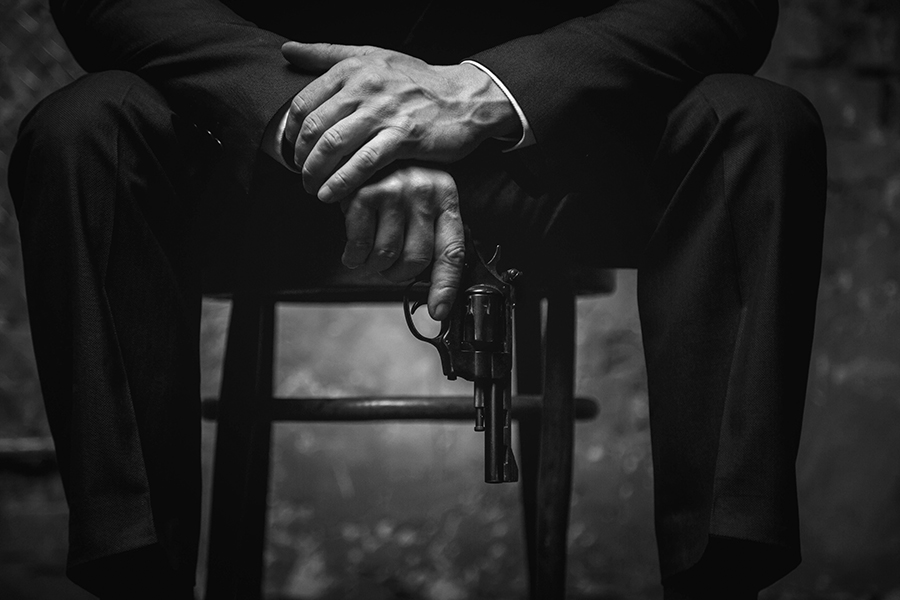My vision of journalism wouldn’t be shared by my American colleagues. In fact, when I explained what drives me and what my aims are to my professors while completing a Masters program at Columbia University, they told me I had probably chosen the wrong career. To me, being a reporter isn’t just a quest to find the truth!
In my work as a journalist, I feel a strong responsibility to be objective and unbiased, to communicate the most complete information to my audience. But this is not all about me. I see journalism as a tool to impact the world around me, to make it fairer, to give a voice to those who don’t have? and to force the guilty — whether it’s a mafia affiliate or a corrupt or unethical politician — to be held accountable.
Growing up in Berlusconi-led Italy, for me, was very seminal. I remember protesting against the corruption of the first Republic when I was 9 years old and getting very frustrated at seeing the same behavior happening over and over again throughout the years as if no preceding scandal was unbearable enough. My frustration came to an end when I joined a team of brave reporters in 2006, at the age of 20, and I had a chance to become active on all types of injustices.
I started traveling Italy, telling the stories of people that were forced to live in houses infested with asbestos and getting sick because of it. I investigated the lack of safety measures that killed seven people in the 2007 ThyssenKrupp fire. I chased after politicians who were colluding with the Italian mafia (such as Marcello Dell’Utri, a former senator who funded Berlusconi’s party and now serving a 7-year jail sentence). I kept working with one thing in mind: Since I understood that not much happens in Italy, even after scandal surfaces, I decided I would persist — again and again — until I could find some justice for the victims of the stories on which I was reporting.
If you can’t fix a situation with a news story, try again, and then again, until it works.
After working for AnnoZero, the most followed and controversial political talk show ion Italian State television, I became part of a group of 12 reporters who started a newspaper in 2009, Il Fatto Quotidiano, today among one of the best-selling in the country. Once again, I was working in an atypical context, since my boss’s orders were simply to do our job, without any regard for the powerful people that could have (and did) make our lives very difficult with lawsuits and intimidations. This may seem normal to some — a journalist being a watchdog of the powerful rather than a pet — but in Italy, it’s often not the case. As great as it was to work for my newspaper, I started feeling a need to go deeper, to find more time to research and produce stories with the potential of having a more significant impact.
I started working on my first documentary when I was studying in New York, with the help of Newsweek magazine. It focused on the women behind the mob; those who run the clans in the most powerful and wealthiest crime organizations around the world, the ‘Ndrangheta. Spending time with these women, exploring the drug trade between New York and Milan, getting hold of telephone tapings and surveillance videos in which they order murders with electric saws, made me realize that there was another aspect to my job that I valued. It was the fact that I got to explore and experience many realities that I would otherwise know nothing about.
I worked on many more projects, but it was only when former editor in chief of Vogue Italia, Franco Sozzani (who passed away in 2016) asked me to become a Special Envoy for global social change platform Fashion 4 Development (F4D), that I decided to focus more on human rights.
I decided that what had always driven me — the desire to fix injustices — could now become the core of my work. I spent much time figuring out the best way I could help as a special envoy and honor the important job that F4D founder Evie Evangelou and Sozzani had given me. I decided to dedicate my skills and time to tell stories of human rights violations, and making them so widely known that people would have a tough time ignoring them.
After exploring many topics, I found one worth telling. Interestingly, I didn’t need to go to a developing country, nor to a place afflicted by wars or extreme poverty to see the worst violations of human rights.
The story took place less than 60 miles south of Rome. After journalist Robert Saviano wrote a book called “Gomorrah” in 2006, that had attracted much attention and made doing business for the mob much more difficult, most of the drug trade had moved from Scampia in Naples to a small town called Caivano, 15 miles north of the city. Parco Verde, the biggest drug dealing “piazza” in Caivano, is impenetrable. Eyes are watching all the time to ensure nobody gets in, and very often, it’s the job of local children. I was interested in finding out what life was like for the almost 600 kids living there.
In this town, where local bosses (according to police records) rent each street for about 100,000 euros a month to drug dealers, with the guarantee that no police will bother the drug market, kids are very aware of who’s in charge.
As one example, 14-year-old Carmen explained to me how the Camorra (Mafia) is helping her and her mother now that her brother — a Mafia affiliate — went to prison. She knows who deals and who kills, especially since the age of six, when a man was shot dead in front of her.
Her classmate, Mario, also witnessed an execution 10 years before that of his father. While we were filming this story, Mario asked a friend of his older brother, who had also died, to help him beat up a kid who was “disrespecting me.” Just like all the characters in this documentary, the kids are at the age at which they need to choose a path: either join local gangs or stay in school. In fact, it was the local school, or more accurately, the headmistress, who is at the center of this story.
Her name is Eugenia Carforo, and for the past 10 years, she had been fighting a personal, daily battle: bringing kids to school and keeping them there as much as possible. When they are not in class, most often, they are on the streets learning a very different, and dangerous, job. Even when kids want to stay out of trouble, trouble seems to find them.
The only playground in town, for instance, is surrounded by junkies walking around 6-year-olds with syringes protruding from their arms. One of the kids’ favorite games is to mock the junkies: walking like them, imitating facial expressions, and counting how many blood-encrusted syringes they can find. When Carfora started working in her school, it was dirty, with dead birds in the bathrooms and guns buried in the school’s courtyard. Years later, it became an example to the whole region, with computer laboratories and courses on languages and arts. Carfora’s dream was to create a school filled with opportunities, and one that was extremely understanding of the issues of kids who often have one or both parents in jail.
“I promise, you don’t have to stay in class. Just come to school today, and we’ll take it from there,” I heard her saying to a young girl. There was only one problem: Her efforts started paying off, kids were attending classes like never before, and the local mobsters became increasingly frustrated by the absence of their young soldiers.
What probably scared the people who rule Caivano more, was that Carfora’s work was generating hope and it was spreading. In one example, there was a square alongside the school that was used for drug trading, where cages with guard dogs were used to scare off intruders. She managed to get rid of the dogs and the dealers and repurpose it as a playground for kids.
Then, the day of the new mayor’s inauguration arrived. People watched from their windows, clapping and unrolling white sheets as a sign of support. It was a turning point when, in Carfora’s opinion, it was decided that the school was too dangerous and had to be closed. And so, it happened.
The new mayor — a man whose office had pictures of dictator Mussolini and a vast collection of fascist symbols —informed Corfora that she didn’t maintain the minimum number to keep the school open (she had 593 students, the minimum was 600). With that, the school was closed and the kids scattered among other facilities nearby. Except, no other principal would check to see if the students were in class, as Carfora had done every morning, calling the parents or driving to their homes to collect those who didn’t show by 8 am.
This documentary was meant to tell a positive story: that of a teacher who was saving kids one at a time in a very troubled place. A place where 36 children had died from Mafia conflicts, drugs, accidents, and a nest of pedophiles rooted in the area. But while filming, it became yet another example of how easily wrong decisions continue to be made in Italy — where everybody knows what’s going on, but nobody intervenes. The former Minister of Education, told of this situation, granted me an interview, and said that the closing of the school signaled that the Mafia had won.
I know my film may not change the lives of these kids, but I do believe that bringing awareness — as F4D teaches — is an excellent place to start. And forcing people to open their eyes might accomplish some little miracle — reopening that school in an area with no hope. It could be just what these kids need to realize that not every scandal goes unpunished. It can give them a chance to be the ones who write their own future.




































